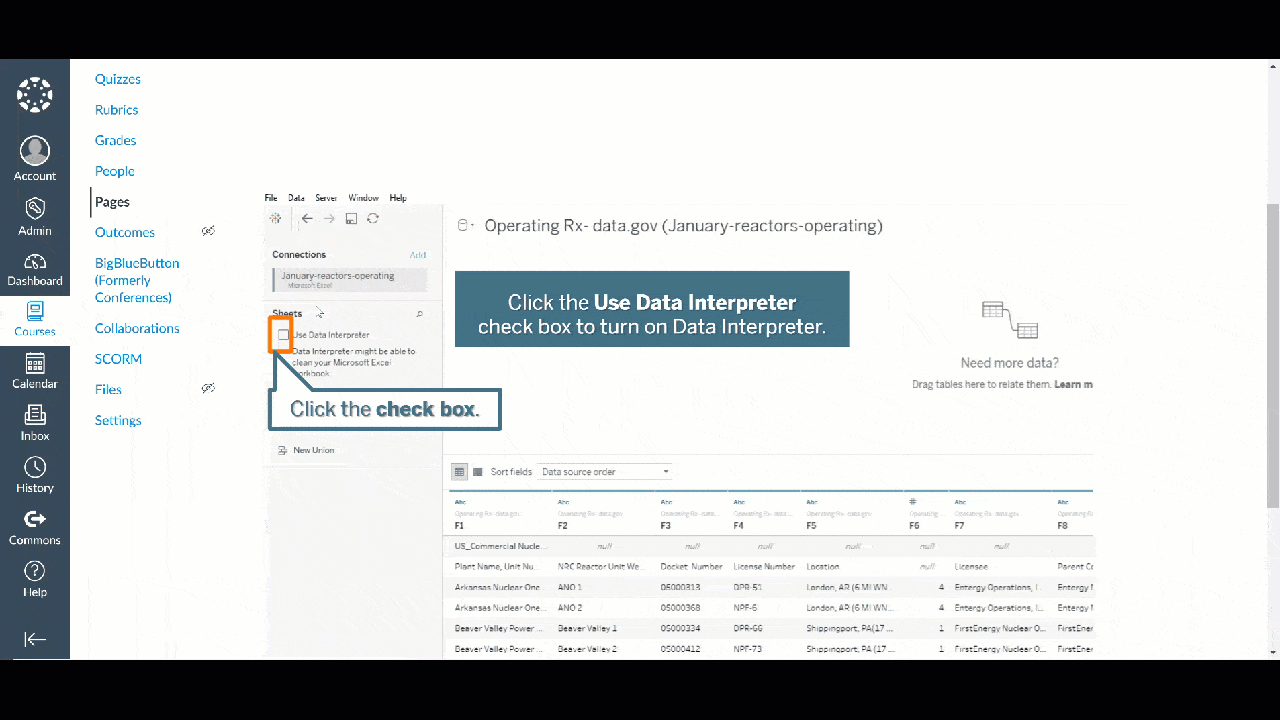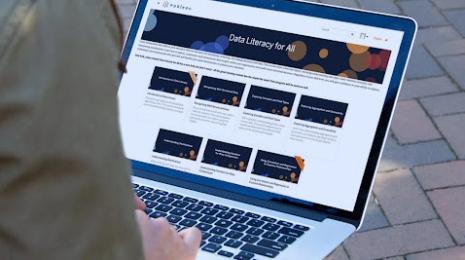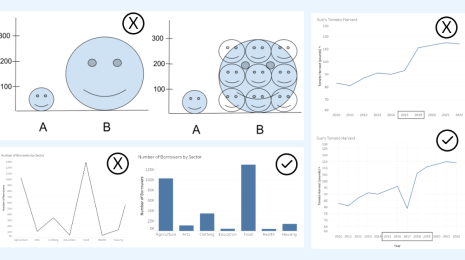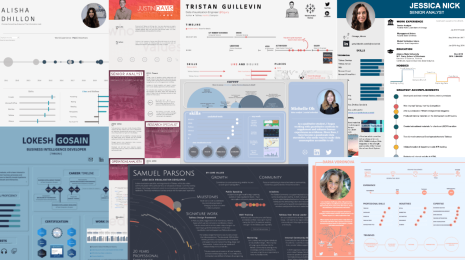5 Easy Ways to Incorporate Tableau in the Classroom
Prepping your curriculum for the upcoming school year? Check out these 5 ways to incorporate Tableau into your class—it starts with downloading your free Tableau for Teaching license.
 Editor’s Note: At Tableau, we feel that data skills are essential for the next generation of workers and business leaders. Over the next 5 years, we have committed to enabling 10 million people with data skills. Tableau’s Academic Program seeks to arm students with the valuable analytical skills needed to make data-driven decisions, both academically and professionally.
Editor’s Note: At Tableau, we feel that data skills are essential for the next generation of workers and business leaders. Over the next 5 years, we have committed to enabling 10 million people with data skills. Tableau’s Academic Program seeks to arm students with the valuable analytical skills needed to make data-driven decisions, both academically and professionally.
As the demand for data skills from employers continues to grow, universities have started to recognize the need to incorporate data literacy into their program’s curriculum. According to the most recently commissioned Forrester Consulting study, “Data skills have risen in importance over the past five years and the trend isn’t likely to stop anytime soon. Surveyed recruiters rank data literacy as the skill highest in demand for entry-level candidates today”.
More than 2 million students and instructors have been able to use the free software and learning resources provided through Tableau’s Academic Programs. In my three years on the Academic Programs team, I've seen instructors from all disciplines and grade levels incorporate Tableau into their classes.
As you look to provide valuable data skills to your students, we’ve rounded up 5 ways to incorporate Tableau into your class and curriculum. Whether you’re teaching graduates or high schoolers, there are resources to help.
1. Assign free training videos to watch before class
Need a quick homework assignment to make sure students are prepared for class the next day? You can choose from a library of 100+ hours of on-demand training videos. Most videos are between six and seven minutes, which makes it easy to pick out the most important features you want to highlight in your class. Each video contains links to download the featured data set, exercise workbook, and additional resources. Students can follow the video step-by-step to complete the exercise and submit a brief write-up on the assigned videos, or turn in the workbook exercise to complete the assignment.
If you’re looking for an assignment that’s a bit longer, all full-time students can receive free eLearning with their Tableau for Students license. With eLearning you can assign modules, career paths, or an entire course for students to complete. Pro tip: use eLearning to prepare for the Tableau Desktop Specialist Exam.
2. Refresh your lectures with free curriculum
The Academic Programs team has its very own curriculum designer to help make bringing Tableau into the classroom even easier. From their own experiences of teaching Tableau in the classroom, they have been able to create ready-curricula that can be incorporated into your class. These courses and modules are designed to be edited and adjusted to fit the needs of your course. We’re constantly releasing new material including project-based learning experiences to make incorporating data skills into your class extra quick and easy. Explore the variety of curriculum including:
- Data Visualization: Ten-week curriculum covering fundamentals of data visualization analysis. For example, lectures on color, dashboard design, typography and mapping data.
- Tableau Desktop Training: Training on basic and advanced Tableau Desktop functionality in any field of study - connecting to data, calculated fields, maps, and dashboards and stories.
- Data Literacy One Course: Ten modules designed to provide students with an introduction to data literacy and quantitative skills. Covers data fundamentals, statistical thinking, and how to communicate with data. Available in a Canvas export package. Great starter course for all education levels.
- Data Literacy Two Course: Ten modules designed to provide students with the data literacy skills of visualizing and communicating data stories. Covers visualization best practices, design fundamentals, presenting data stories, and data culture.
Note: This curriculum can be requested through the Tableau for Teaching User Group page exclusively made for Tableau for Teaching Instructors. Please log in to the Tableau website to request access.

3. Offer an in-class challenge with a community project
Makeover Monday was a social data project created by the Tableau community to help the data viz community gain inspiration and learn from others to improve their data skills. Fitting the challenge into your course schedule is easy. Each week, select a featured data set with expert feedback on the original chart. Spend a class having students create their own dashboard from the data set that week, or offer extra credit for participation.
Students can upload their work to Tableau Public, and share a URL to receive credit. Or, have your class tweet their completed dashboard using the hashtag #MakeoverMonday, and receive feedback from the community.
“We've been using Makeover Monday as an in-class exercise. Students move from working in groups and trying to emulate the Tableau Visionary's example to working individually and coming up with variants. Having a data set, examples, and explanations provides students with a safety net as they gain mastery in Tableau Desktop.” —Chapman Greer, University of Alabama
Although Makeover Monday is on an indefinite hiatus, it remains an opportunity for students to learn and share with the community. For another great community project, check out Back 2 Viz Basics. It features bi-weekly data projects created to help those, wherever they stand in their Tableau journey, practice some of the basics.
A data set or prompt will be released on Sunday. Participants will have one week to participate and submit their projects. Students can again upload their work to Tableau Public, and share a URL to receive credit. Or, tweet their completed work using the hashtag #B2VB, and receive feedback from the community.
4. Spark creativity with new data sets
Finding quality data sets can be hard—finding interesting data sets that inspire students can be even harder. Have your students work with data that is interesting to them and entice them to learn how to use Tableau on their own.
We’ve compiled a list of some of our favorite data repositories on our Student Resource community page. Here’s some of our favorites:
- The Big Mac index, by the Economist
- Airbnb rental data, by Inside Airbnb
- Uber Travel Time, by Uber Movement
Working with dirty data? Use Tableau Prep, a data prep tool to clean and shape your data, which is available for free to students and instructors through our Academic Programs.
If you’re interested in data sets for younger learners, check out Data Kids for appropriate data sets and learning resources for ages 5-13.
5. Tune in to our Lunch and Learn webinar sessions
Build data skills, community, and learn more ways to incorporate Tableau into your classes. We have sessions to help get you started, learn tips and tricks, and explore other community resources.
The session hosted by Podium Education can help you set-up and utilize Tableau Online in the classroom. Or, check out the session with Dr. Dan Stone, University of Kentucky, and Dr. Ann O’Brien, University of Wisconsin-Madison, to learn some new ways to teach Tableau in the classroom.
Attend a live upcoming session or watch previous sessions on-demand at any time. Registration for upcoming sessions and the library of on-demand sessions can always be found on our Lunch and Learn page.
Join instructors today and download your free Tableau for Teaching license.
Storie correlate
Subscribe to our blog
Ricevi via e-mail gli aggiornamenti di Tableau.








